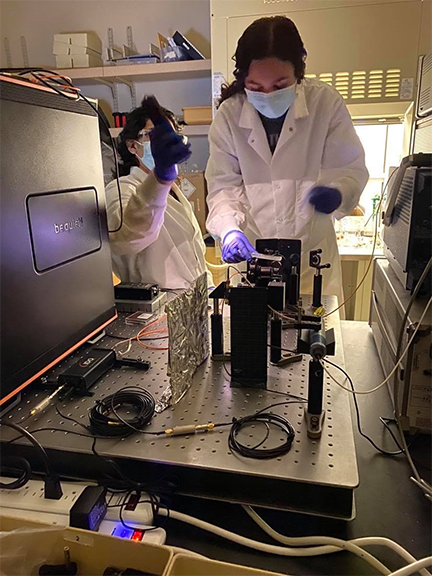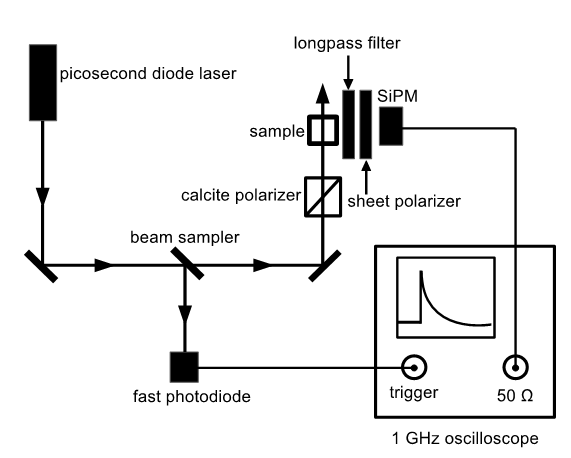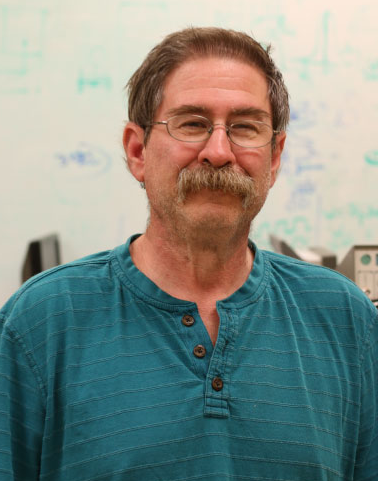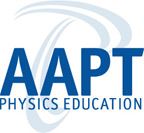- Home
- What We Do
- Laboratory Immersions
- Immersions 2022
- Imm2022Reed_NanosecondLifetime
Reed College, Portland OR
Nanosecond Excited State Lifetime Measurements
Dates: June 15, 2022 to June 17, 2022
Number of setups
available: 1
Maximum
number of participants: 3
------------------------------------------------------------------------------------------------------------------------------------------
The measurement of excited state lifetimes reinforces the connection between transition rates and the selection rules introduced in undergraduate quantum mechanics. Monitoring time-dependent luminescence is a common method for measuring excited state lifetimes. However, measurement of luminescence lifetimes on short (i.e., nanosecond) timescales is challenging when the temporal response of the detection system is comparable to the luminescence lifetime. This situation is encountered for excited states that decay by allowed transitions, e.g., spin-allowed decay of fluorescent molecular excited states. In such cases, the instrument temporal response must be deconvolved from the observed luminescence decay to order extract the actual excited state lifetime.
 In this Immersion, we will explore two different techniques, a purely analog method and time-correlated single photon counting (TCSPC), for measuring fluorescence lifetimes when the time scale of excited state decay is comparable to the temporal response of the detection system. Fluorescence lifetimes of the molecules perylene and fluorescein, which decay single exponentially on a nanosecond time scale, will be measured. The skills that will be covered include
In this Immersion, we will explore two different techniques, a purely analog method and time-correlated single photon counting (TCSPC), for measuring fluorescence lifetimes when the time scale of excited state decay is comparable to the temporal response of the detection system. Fluorescence lifetimes of the molecules perylene and fluorescein, which decay single exponentially on a nanosecond time scale, will be measured. The skills that will be covered include
- alignment of the optical path
- characterization of the instrument temporal response for both methods
- capture of fluorescence decay curves by both methods
- development of decay models that incorporate the instrument response
- fitting of the decay models to the observed decay curves with deconvolution of the instrument temporal response and extraction of the actual excited state lifetimes
A schematic of the analog method apparatus is shown below. For TCSPC, the silicon photomultiplier detector (SiPM) is replaced with a fiber-coupled single photon counting module (SPCM), and the oscilloscope is replaced with the TCSPC electronics. The optical setups for both methods are mostly identical, with additional light collection optics required for efficient coupling of fluorescence photons into the SPCM for TCSPC.
Literature will be provided prior to the immersion so that participants can familiarize themselves with both methods, the properties of the SiPM and SPCM detectors, and incorporation of the instrument temporal response into the data analysis.

What you should bring for data analysis
A laptop with your preferred curve fitting software that supports user-defined fit functions. Igor Pro (www.wavemetrics.com) will be used by the immersion mentor to demonstrate the data analysis procedure.
Safety considerations
We will be using a Class 3B laser. Laser safety glasses will be provided and worn when appropriate, and best practices for safe laser beam alignment will be used.
Equipment required for implementation at your institution
For both methods
- Optics, optic mounts, signal cables, sample cells - $1800
- Fast amplified photodiode, < 300 ps rise time - $300
- Sub-nanosecond pulsed laser or LED - Descriptions of low-cost sub-nanosecond pulsed light sources are available in the literature. The picosecond diode laser used in this immersion (ALPHALAS PLDD-20M driver with LD-405 laser head) cost around $7800 in 2014.
For the analog method
- Silicon photomultiplier with fast output - $200 (Digi-Key, MICROFC-SMA-10035-GEVB)
- DC power supply, 200 mA minimum current limit @ 30 V, single output - $350
- Oscilloscope, 400 MHz minimum bandwidth preferred, 2 input channels - The 1 GHz bandwidth oscilloscope used in this immersion was obtained from DOE LEDP for the cost of shipping. New oscilloscopes in the 400 MHz-1 GHz range can be obtained for $5000-$12000, cost depending on bandwidth and the number of input channels.
For TCSPC
- Fiber-coupled single photon counting module - The Excelitas fiber-coupled single photon counting module offered periodically by ALPHA for around $1800 is suitable for measuring nanosecond lifetimes by TCSPC.
- Additional optics for coupling fluorescence into fiber-coupled single photon counting module - $850
- TCSPC electronics – Descriptions of low-cost integrated TCSPC systems and TCSPC systems created from used legacy NIM modules are available in the literature. The integrated TCSPC system used in this immersion (Becker & Hickl SPC-130-EMN), consisting of a PC plug-in card and PC with a PCI bus, is one the least expensive available commercially at about $12000.
 Mentors: David Laman
Mentors: David Laman
David Laman is an Associate Professor of Physics and Chemistry at Heritage University (HU) in Toppenish, WA. David has a PhD in Chemical Physics from the University of Maryland at College Park and did postdoctoral work at Pacific Northwest National Laboratory. He has three decades of experience in time-resolved spectroscopy of gas-phase and condensed-phase systems. David maintains a time-resolved laser spectroscopy laboratory at HU, where he mentors HU undergraduates and local high school students in research internships. The work in this laboratory focuses on the photophysics of pi-conjugated polymers/oligomers and room-temperature phosphorescence of organic molecules “vibrationally frozen” in inert solid matrices. David is the PI for the HU NASA Space Grant, a board member of the Pacific Northwest Association of College Physics, and an enthusiastic new member of ALPHA.
Please note that the Jonathan F. Reichert Foundation has established a grant program
to help purchase apparatus used in Laboratory Immersions. Limitations
and exclusions apply, but generally speaking the Foundation may support
up to 40% of the cost of the required equipment.





